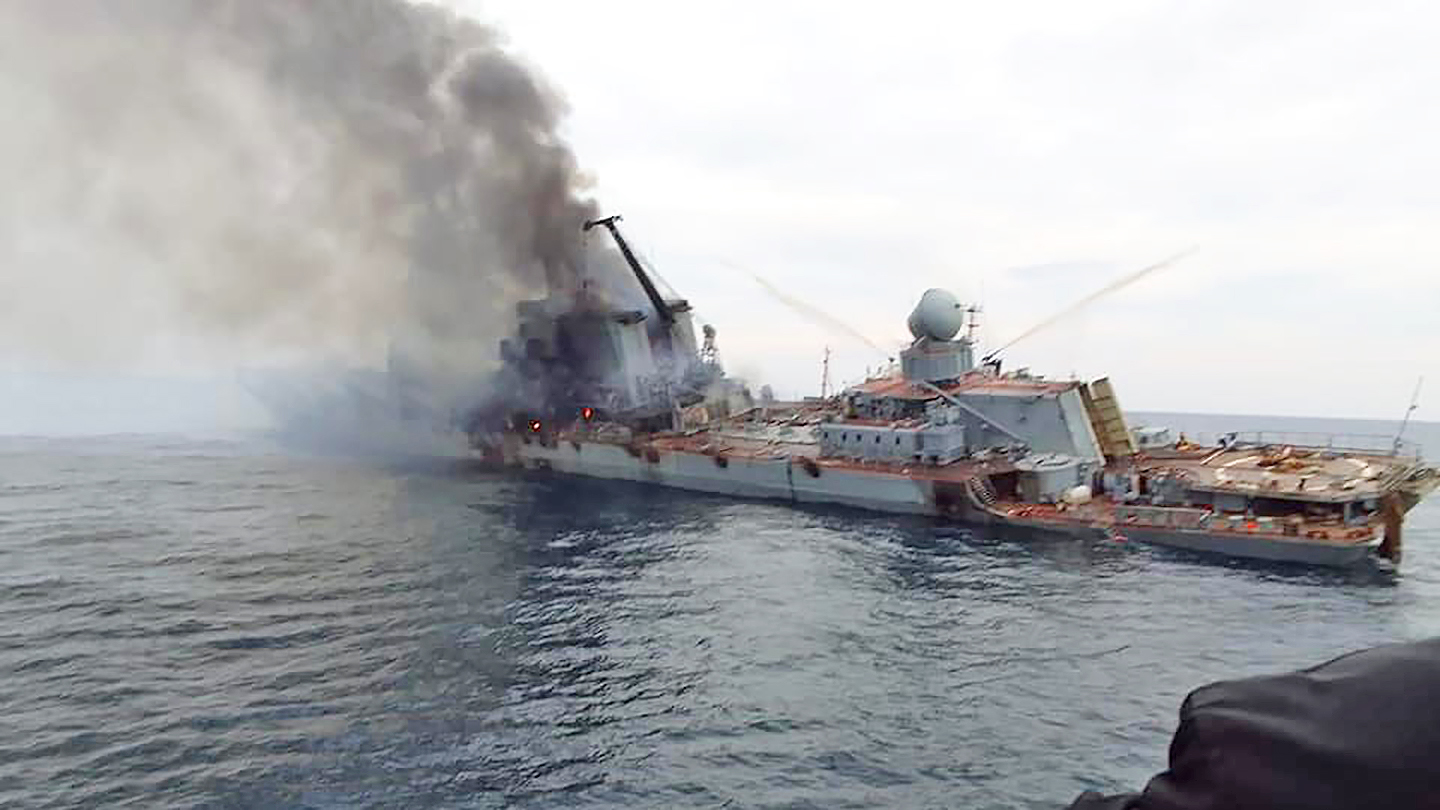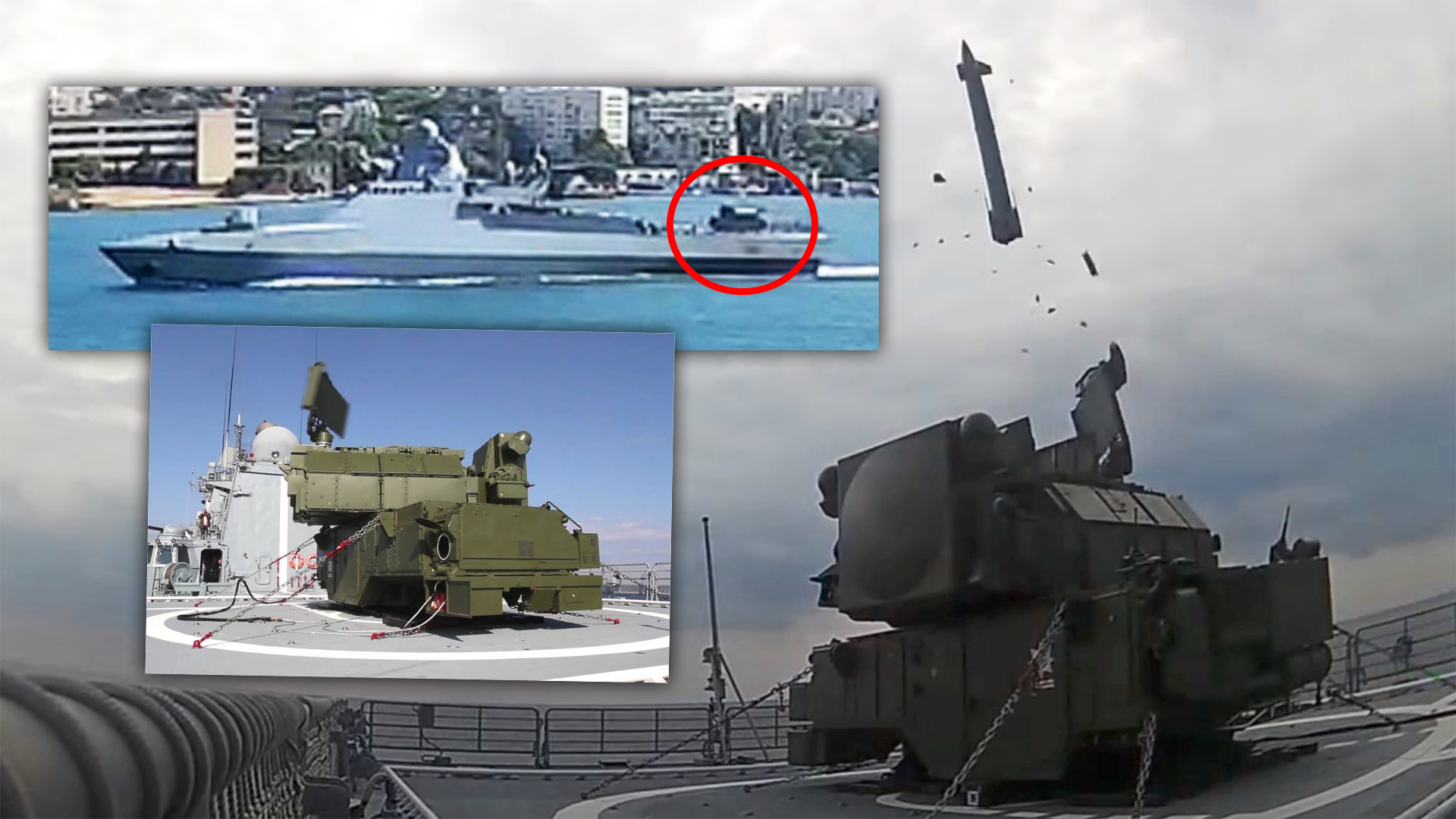Images emerging on social media show a Russian Vasily Bykov class corvette (Project 22160 class) fitted with a ground-based Tor surface-to-air missile system on its flight deck.
While it isn’t the first time Russia has tinkered with placing ground-based SAM systems onto its ships, a Ukrainian naval expert tells The War Zone that the move was in response to the recent destruction of the Project 1164 Slava class cruiser Moskva.
“This was a reaction to the Moskva,” retired Ukraine Navy Capt. Andrii Ryzhenko, a former member of that nation’s general staff, told The War Zone Tuesday afternoon. “They understood that Ukraine can use anti-ship missiles and they’re afraid to lose more.”

The Vasily Bykov class corvettes are typically only equipped with man portable air defense systems, (shoulder-fired SAMs) Ryzhenko said. The Tor-SC15 system, he said, greatly improves its air defense capabilities.
“It can carry eight to 16 sophisticated missiles with a maximum range of 15 km,” he said. “This system is quite good to fight UAVs and anti-ship missiles and also helicopters and aircraft.”
The Project 22160 corvettes are very active in the region, with four being based there as part of the Black Sea Fleet. In fact, there have been rampant rumors that Ukraine had struck examples of these ships before, but they turned out to be inaccurate. The rumors were circulating prior to the sinking of the Moskva, which made the nebulous anti-ship missile threat against Russian warships very real.

There are some drawbacks, however, to placing a ground-based system like the Tor on a ship. The radar system, for instance, would be partially blocked by the superstructure, creating a major potential blind spot toward the bow, Ryzhenko said.
And there could be a loss of effectiveness in very rough seas, Ryzkenko added.
Saltwater exposure is likely a minor concern, he said, given that the systems are built to operate in a wide range of conditions.
While throwing Tor surface-to-air missile systems on these ships would give them some form of point defense against various airborne threats, they could also provide localized air defense for other ships and small land masses, most notably for Snake Island and Russia’s ongoing naval activities around it.
Placing such systems on ships is not a new concept.
In 2016, for instance, there was an at-sea test of a Russian Army Tor-M2KM SAM that was fired from a Project 11356 frigate Admiral Grigorovich. As with the Bykov class corvette, that system was also mounted on the flight deck.

It’s also worth noting that the Project 22160 class was designed with a flex space below the flight deck, which has a trap-door-like arrangement. It was envisioned for the class, and outgrowths of it, to be able to carry containerized weapons in a modular fashion, such as shipping container-deployed Kalibr cruise missiles and even surface-to-air missiles, but we haven’t seen that capability in action. Clearly, just strapping a Tor to the ship’s deck is the best option at this time in terms of quickly giving the vessels some form of robust air defense capabilities.
The Russians aren’t the only ones who’ve tested this improvized concept, either.
Israeli Navy’s Sa’ar 5 class corvettes have sailed with Iron Dome air defense system launchers strapped to their flight decks. Recently, a two-launcher configuration was deployed due to growing concerns in Israel about Iranian-backed Houthi rebels in Yemen possessing Iranian-supplied “suicide drones” that could hit targets within the country. Iron Dome has since been integrated directly into the Sa’ar 6 class.
In 2017, the Egyptian Navy began placing Avenger AN/TWQ-1 air defense vehicles on Mistral-class ships to provide point defense for the big amphibious ships.
The Avenger is a turreted short-range air defense (SHORAD) system with two launchers, each capable of holding four FIM-92 Stinger heat-seeking surface-to-air missiles, as well as a .50 caliber M3P machine gun. It’s usually mounted on the back of a Humvee, but can be also be emplaced in fixed positions on the ground and atop structures.

Strapping various ground-based weapon systems to U.S. Navy ships isn’t unheard of, either, especially for force protection scenarios and for experimental testing and proving new concepts of operation.
So, while the inclusion of the Tor SAM system onto Vasily Bykov class corvettes may be far from an elegant or highly integrated solution, without it these modern ships are highly vulnerable to aerial attack and especially to a quickly evolving anti-ship missile threat, with RGM-84 Harpoons soon on the way to Ukraine.
As Ryzhenko said, “Challenges exist, but this still gives the ship better defensive capabilities.”
Contact the author: howard@thewarzone.com
